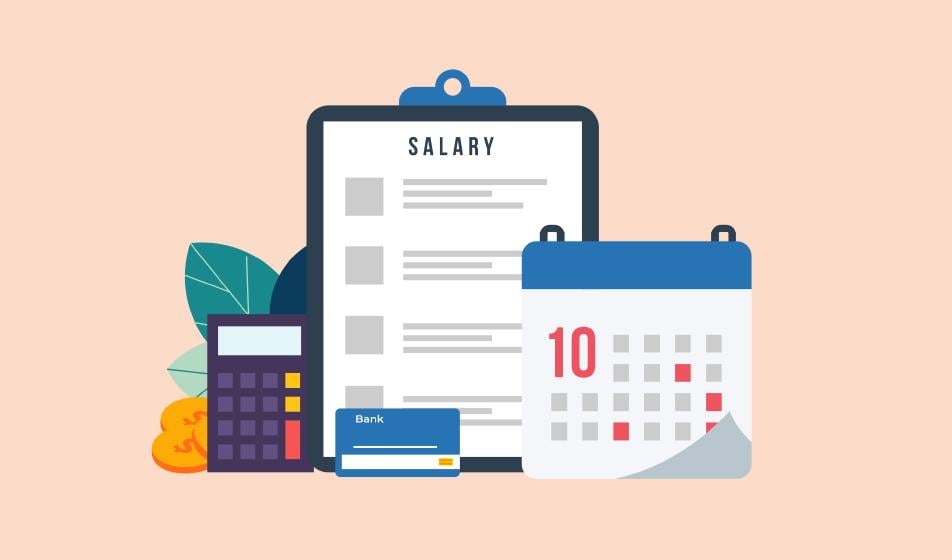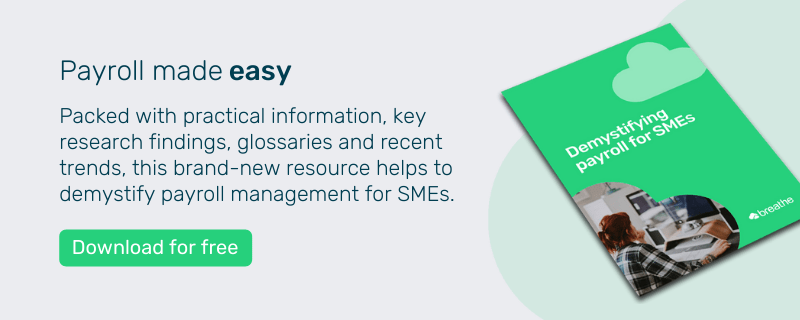If you’re growing your business from the ground up, it’s inevitable that you’ll eventually take on extra pairs of hands when things get busy. And if you hire new people you’ll need to pay them - this is where payroll comes in.
But what does payroll mean and what does it involve? In this blog post, we'll cover the definition of payroll, why it's necessary and the different options you have when it comes to running it within your company.
Skip to:
What should be included in payroll?
The different ways of running payroll
What is payroll?
The term ‘payroll’ means a list of employees within a company and how much they are to be paid, but nowadays it is more commonly used in reference to employee wages and making a record of the amount of money an employee has made over time.
Payroll is essential in any business in which people are employed to work. Payroll is needed to:
-
Calculate how much your employees need to be paid
-
Calculate how much tax and NIC you need to deduct from an employee's gross pay
-
Report employee pay details to HMRC
-
And most importantly, pay your employees!
If you're in the process of registering yourself as an employer, the UK government website provides an in-depth guide on getting started.
What should be included in payroll?
In order to run payroll, you firstly need to know what details are needed. Here’s a breakdown of the different elements that make up payroll.
Employee details
Before you’re able to run payroll, you’ll need to access to your employees’ details such as their name, address, national insurance number and salary.
You can do this with the help of intuitive online HR software.
Employee hours
If you pay your employees on an hourly rate, you’ll need to have a system in place to monitor the hours they work so you can ensure they are paid the correct amount.
For employees that are on a salary, you may choose to monitor when they’re working to ensure they are adhering to their contracted hours.
You’ll also need to log sick days for each employee depending on your company policy, as well as any overtime employees have worked.
Salaries, wages and net/gross pay
You need to keep a record of whether your employees are on a salary or an hourly wage, as this will determine how you calculate their pay.
A salary is a pay packet that an employee receives on a monthly basis. These payments are based on a yearly amount that is divided into 12 individual payments.
But depending on the nature of your business, you may choose to pay your employees a wage instead of a salary. A wage is an amount based on hours worked rather than a yearly fixed amount. You’ll set an hourly wage and multiply this by the number of hours worked to calculate their total pay in a particular period.
On your employees’ payslips you’ll need to indicate their gross and net pay. Gross pay is an employee’s total pay within that period and net pay is the amount they receive after tax and any other deductions.
Additional payments
Again, depending on the industry your business is based in, employees may receive commission and/or tips on top of their basic pay. These will need to be accounted for in payroll too.
Tax and deductions
By law, every employee has to pay tax and national insurance from their total gross pay. This amount can vary depending on the total amount an employee has earned and their circumstances. Regardless, it is the employer’s responsibility to ensure the correct amount is deducted in payroll and paid to HMRC each month. It’s important you complete this on time each month or you could be charged a penalty.
Employee benefits
Within your business you may offer your staff a generous benefits package, as this can help to boost your company culture as well as employee morale and motivation. This can include private healthcare, a pension package and employee discounts. It’s important that you include these factors in payroll as some can affect the amount employees are paid each period.
The different ways of running payroll
When setting up payroll to pay your employees, you’ll have a few options to choose from and you’ll need to take some time to decide on the best option for you and your business.
By hand
Needless to say, doing payroll by hand is the cheapest but the most time-consuming option. If you choose to do the company’s payroll by hand you'll need to make sure you do it correctly and adhere to all calculations and taxes required – if you don’t you could be breaking the law and could potentially have a nasty fine coming your way.
And, if you want to keep your employees happy and maintain retention levels, you’ll need to make sure you’re paying the correct wages and on time. Get this wrong and it could have disastrous consequences on your business.
Hire an accountant
Whilst having someone else to run your payroll for you would free up your time, having an accountant on board can significantly ramp up your costs. However, the big plus side is that the extensive training accountants receive means that they are used to working with large amounts of data and are able to work efficiently and accurately with minimal errors.
Payroll software
The cheapest and least time-consuming option is to use a software package to help you run your payroll accurately and efficiently. However, when choosing a payroll software it’s important you take some time to consider the features your business needs from the software.
Some things you may need to consider include:
- Can the software produce payslips?
- Can I report PAYE through the software?
- Can I record and make pension payments through the software?
- Am I using an online HR software that is designed to work with my payroll software?
Payroll isn't just numbers
Although the whole point of payroll is essentially to pay your employees, it's crucial that you get it right and keep within the law when managing it. Therefore choosing how you manage payroll within your company is an incredibly important decision, so giving it thorough consideration is something you should prioritise.
.webp)
Author: Sarah Benstead
Sarah is a Product Marketing Specialist here at Breathe. Always innovating, she loves writing about product releases in an engaging & informative way. When she's not coming up with new ideas, she enjoys long walks with her dog, Clifford.




